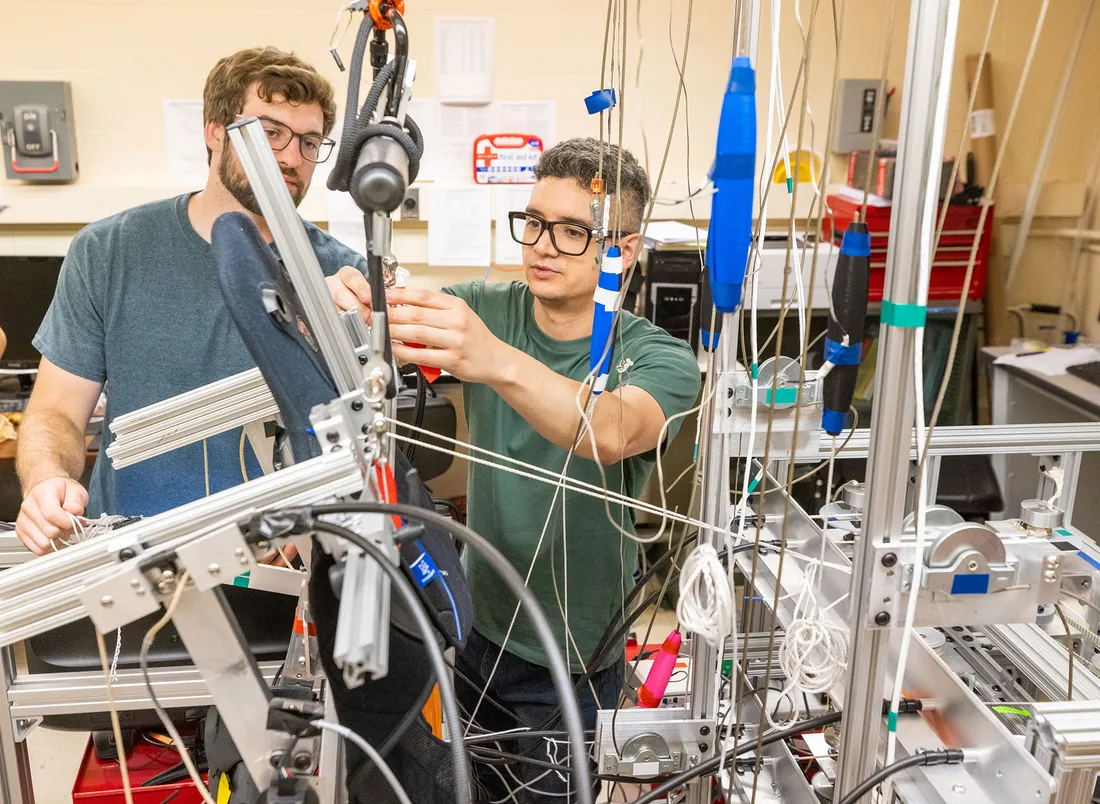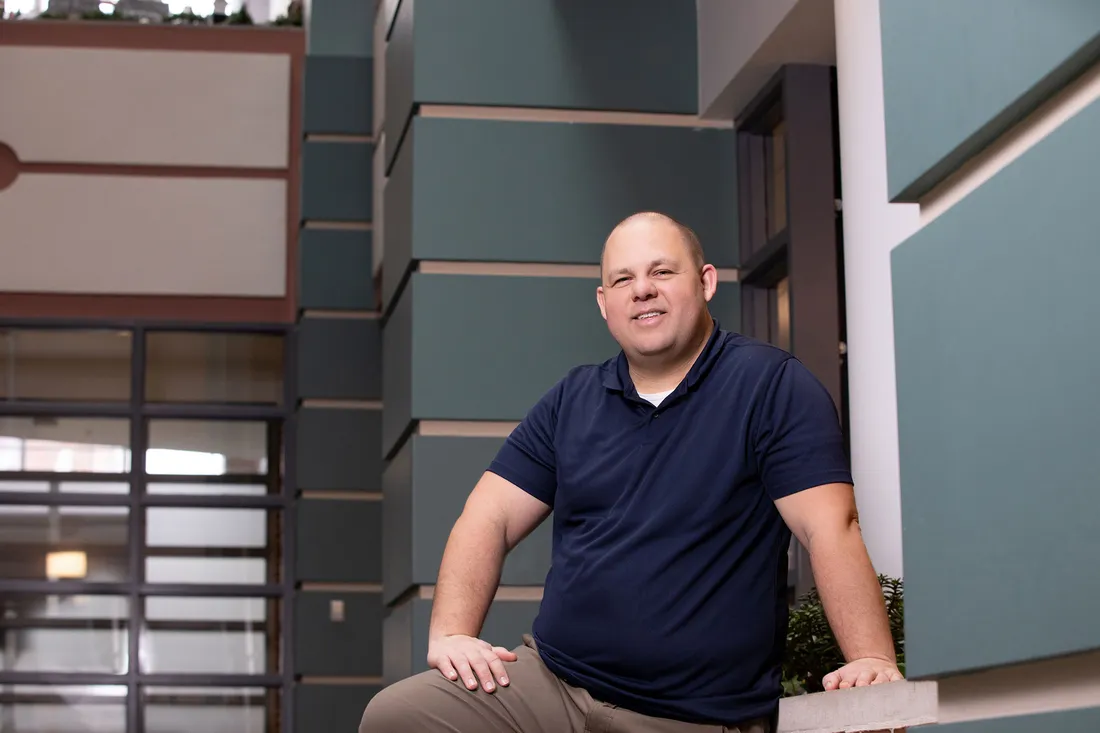
Falk College public health professor David Larsen hopes that the Dried Attractive Bait Station he co-invented will help reduce the transmission of dengue, which is spread in tropical and subtropical areas by the Aedes aegypti mosquito.
The Aedes aegypti mosquito represents a serious global public health threat. An inhabitant of subtropical and tropical environments, it transmits several viruses, including dengue, chikungunya, zika and yellow fever. Dengue, for example, infects an estimated 100-400 million people worldwide and claims upwards of 40,000 lives annually, according to the World Health Organization. At a time when current interventions—such as sprayed insecticides—can prove inadequate, David Larsen, a public health professor at Syracuse University’s David B. Falk College of Sport and Human Dynamics, is looking to curb Aedes aegypti’s transmission of debilitating and deadly viruses. “Humans have been trying to control mosquitoes for millennia,” he says. “Mosquito-borne diseases cause a lot of human misery around the globe. We need solutions for that.”
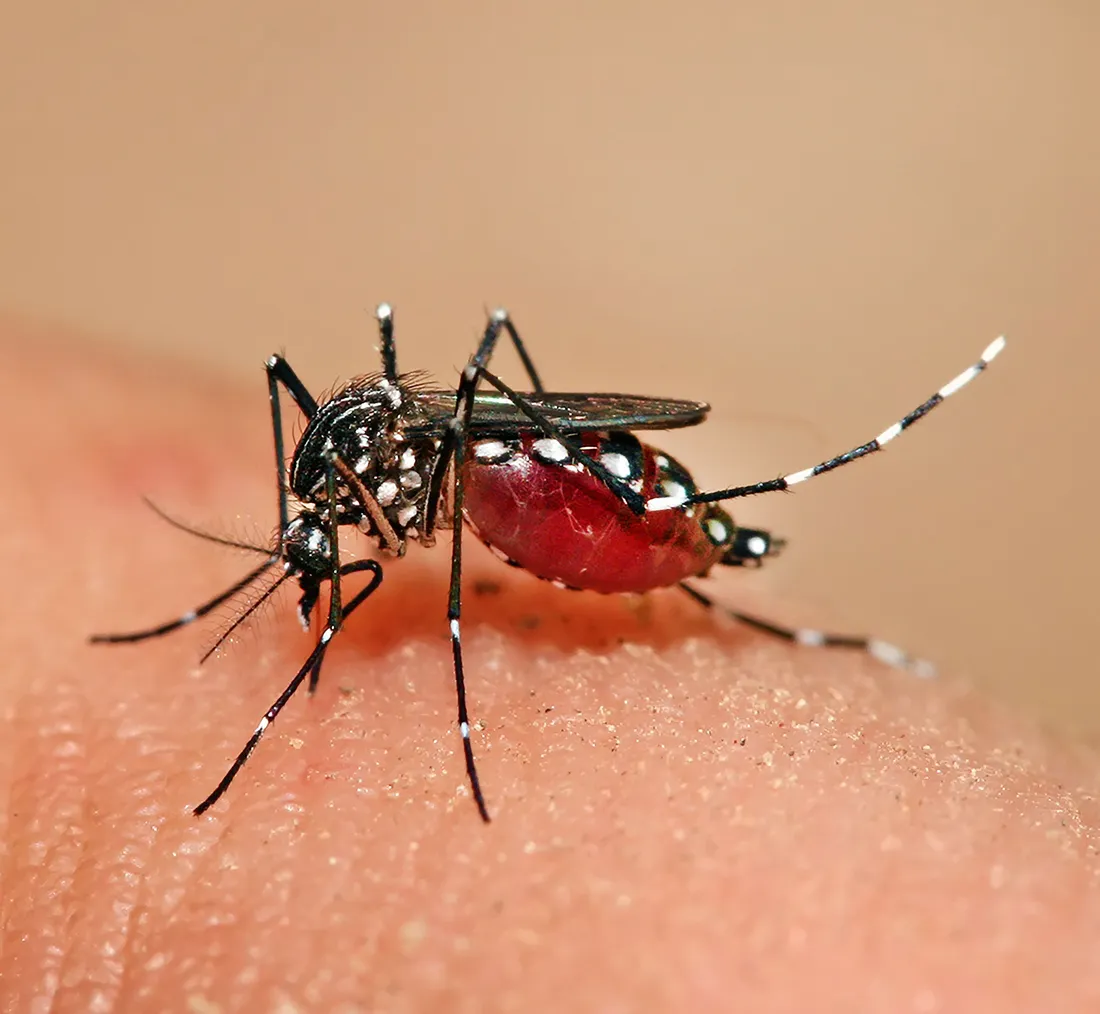
The Aedes aeygpti mosquito carries several deadly or debilitating viruses. It’s known as a “container breeder” and inhabits urban areas where females lay eggs in standing water. Photo by Muhammad Mahdi Karim.
To that end, Larsen is exploring the effectiveness of a novel device known as the Dried Attractive Bait Station that he co-invented. The lure-and-kill device features a black foam surface that has been soaked in a sugar-boric acid solution and dried. Since mosquitoes like dark areas and feast on sugar for energy, they are drawn to the device and killed when they ingest the toxic solution. “The black color attracts them,” he says. “They land, eat and die.”
Larsen first began work on the project in Ecuador several years ago and received a patent for the device in 2019 along with fellow researchers Marco Neira, now with The Cyprus Institute, and Anna Stewart-Ibarra ’07, G’12, formerly with SUNY Upstate Medical University and now executive director of the Inter-American Institute for Global Change Research in Uruguay. “Our first idea for the device was like a hummingbird feeder and one of them leaked in the cage,” he says. The next day, the accidental spill had dried and with it laid dead Aedes aegypti—100% mortality, Larsen says. “It was a fortunate mistake.”
Seeking To Reduce Dengue Transmission
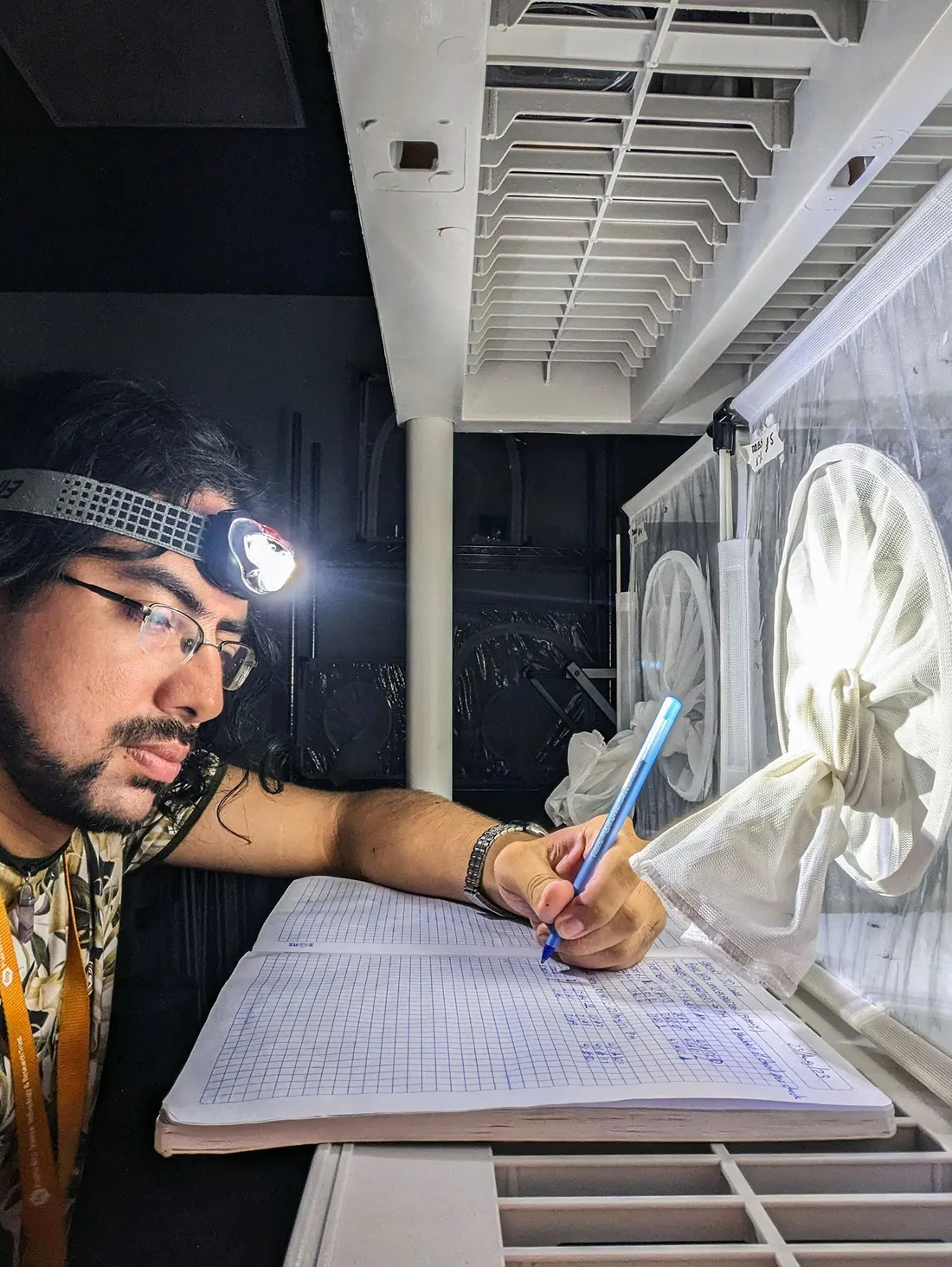
In the Puerto Rico Vector Control Unit lab in Ponce, Falk College postdoctoral researcher Leonardo Ortega López records the results of tests he’s conducting.
This summer, with funding support from the U.S. Centers for Disease Control and Prevention branch in San Juan, Puerto Rico, Larsen and Falk College postdoctoral researcher Leonardo Ortega López are testing the device in Ponce, Puerto Rico. They’re working closely there with the Puerto Rico Vector Control Unit (PRVCU), a nongovernmental organization that shares their goal of reducing the Aedes aegypti population to mitigate the spread of dengue, the most common vector there. Ortega López did field work on the mosquito in his native Ecuador for his doctoral degree from the University of Glasgow. He joined Larsen this year following research work at the Pasteur Institute in French Guiana. “I’m very interested in the behavior and ecology of these insects,” he says. “I feel that my work is also important in terms of preventing diseases and improving the health and welfare of people.”
Known as “container breeders,” Aedes aegypti inhabit urban areas, especially neighborhoods where water accumulates in everything from old tires to plastic containers. The females readily find blood meal (humans preferred) to produce eggs and lay them in standing water. Ideally, they find everything they need in and around homes—blood and sugar sources, water and dark places where they can rest and feel safe from predators. “The behavior of Aedes aegypti has evolved to live in close contact to people,” Ortega López says.
Optimizing the Lure-and-Kill Device
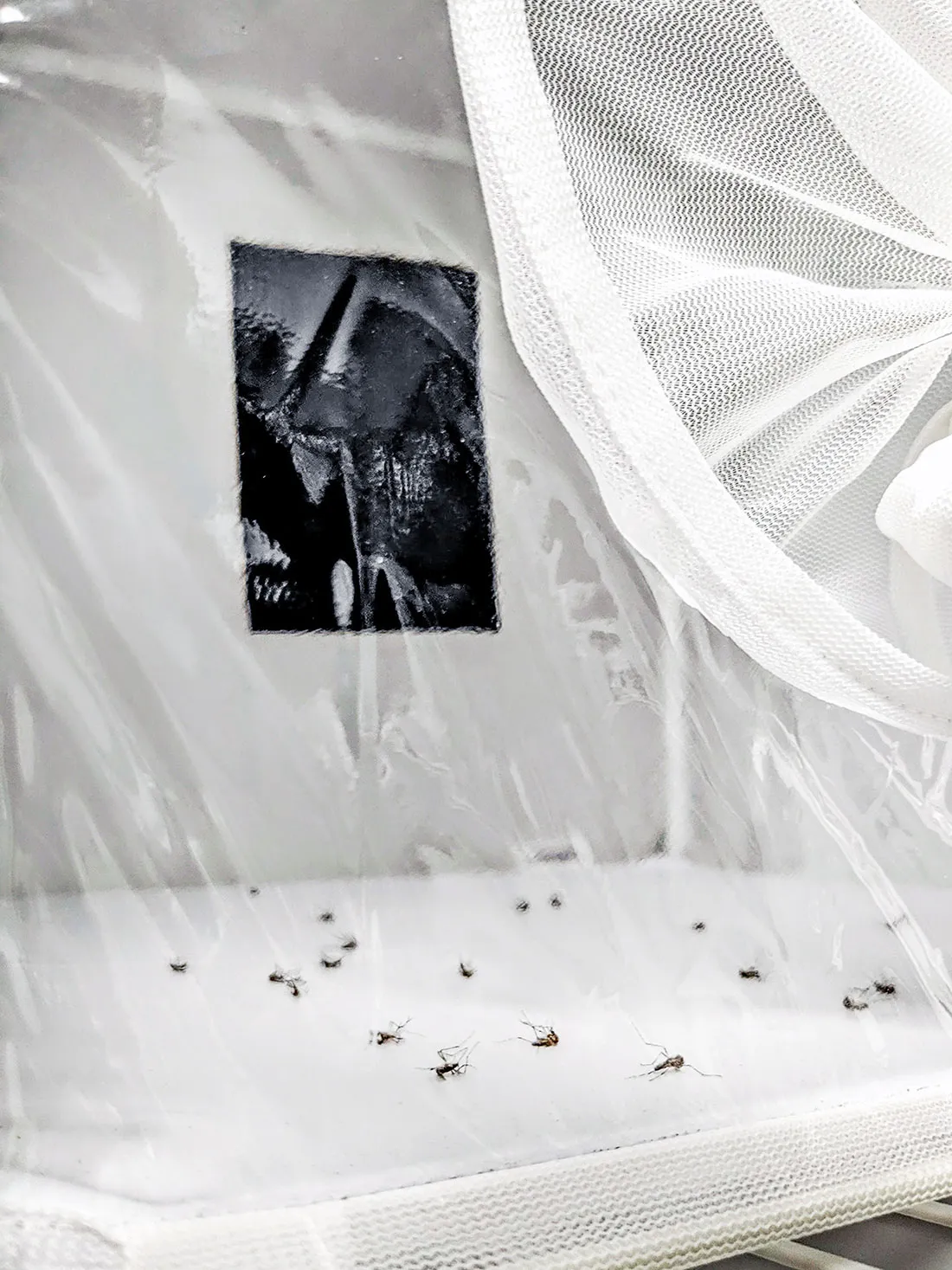
This inside look at an experiment cage shows a Dried Attractive Bait Station and the resulting mortality of female Aedes aegypti.
This summer, Larsen and Ortega López established a four-room, mosquito-proof experimental house, with the goal of optimizing the design of the Dried Attractive Bait Station, including its size (it’s about four inches in diameter), the number needed per room, and the optimal lethal dosage of the solution. “Our focus is on testing the device’s ability to attract the mosquito and then kill it,” Larsen says.
Ortega López tested the concentration of boric acid in the solution on female mosquitoes he’s breeding in the PRVCU lab. Through December, he’ll perform tests in the experimental house to gather data. The devices will be placed in white rooms where they will be the only dark spot. He’ll release 50 female mosquitoes each time and then recover them with an aspirator, dead or alive. In particular, they’re focused on older females, the most productive egg layers. “If we can reduce that aged population, then we’ll have a bigger impact on transmission,” Larsen says. “That’s what we’re hoping to see.”
Next summer, they plan to test the bait station in a field trial, placing the device in upwards of 300 homes to track its impact on the Aedes aegypti population. From there, Larsen will seek funding to conduct a community randomized trial, putting the devices in homes in 20 communities and comparing the dengue transmission with that of 20 communities that aren’t equipped with the device. “Two cool aspects of the device are that it’s really cheap and doesn’t require electricity,” he says. “That means that if it works, it could be a game changer for mosquito-borne disease.”
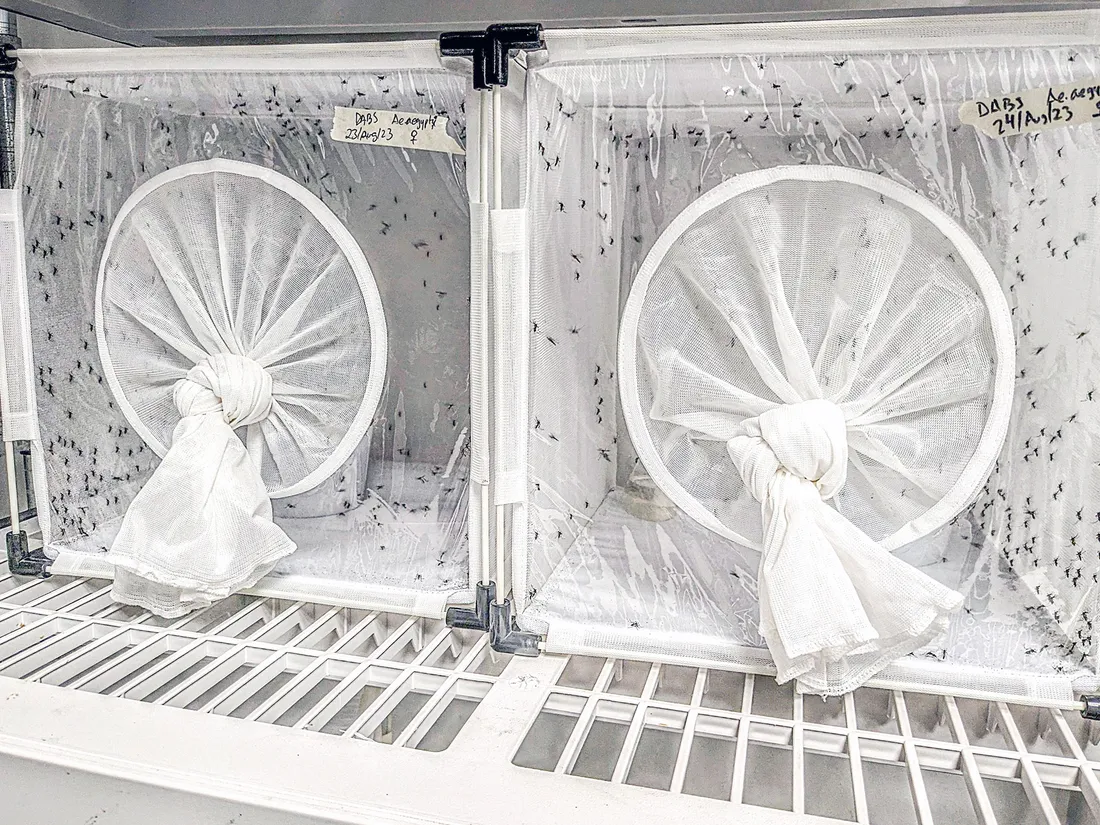
Ortega López breeds female Aedes aegypti in the lab for experiments, separating them from males in the pupal stage. “We only need females,” he says, “because only females bite.”
Changing Climate Concerns
Larsen sees potential for the device in other areas inhabited by disease-spreading mosquitoes with similar behaviors. Climate change magnifies the issue even more. Malaria cases, for example, have appeared this year in Texas and Florida. As ecosystems evolve from warming climates, Ortega López says Aedes aegypti populations could expand beyond changing latitudes to greater altitudes as well, spreading into areas of the Andes, for instance, where it’s too cold for them now. “That’s a big problem, because you will have populations that haven’t been exposed to these diseases,” he says.
Continued research and surveillance are crucial to safeguarding public health, and as Larsen notes, dengue may not be a big concern for mainland America, but it’s a major public health issue globally. “With climate change,” he says, “dengue is likely to get worse.” And he hopes the simple device he helped create will play a part in the solution to reducing transmission.

